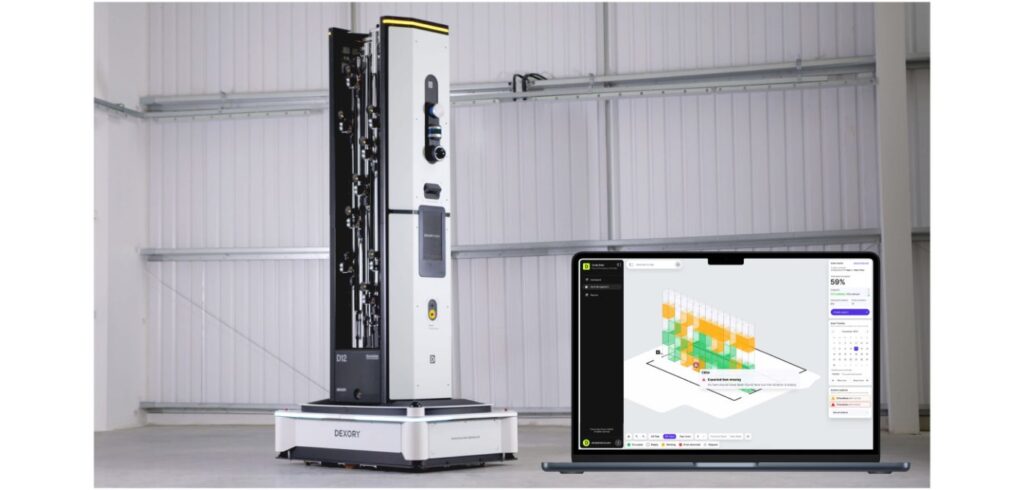Robotics and data intelligence company Dexory has launched a logistics solution powered by autonomous robots, digital twins and real-time data intelligence.
The DexoryView platform automates data collection and builds real-time digital twins that unlock insights across all levels of warehouse operations. This enables up-to-date access for companies to their inventory – across the receiving, storing and dispatch stages – from anywhere and at any time. Not only will they be able to automate their stock checks with this solution, but they will also be able to keep track of occupancy. These functionalities are expected to increase efficiency and facilitate profitable operations.
DexoryView will be supported by a new Dexory robot. This robot was built to support DexoryView and can extend up to 12m. The range of height ensures it can scan warehouses of any shape or size. With an array of high-quality 3D depth cameras and sensors, the robot autonomously navigates the warehouse using lidar technology to capture high-definition 3D scans of the space as well as any labels and barcodes on pallets, parcels or products.
These scans are fed straight into the platform to create accurate, real-time digital models of the status and condition of warehouse racks and items on them and are presented through an up-to-date digital twin of the warehouse. Offered as a subscription model, companies can scale their DexoryView access based on their data needs.
Andrei Danescu, CEO of Dexory, said, “The DexoryView platform offers a real-time representation of the state of your warehouse via an intuitive, easy-to-access digital format – including racking, all goods and machinery inside as well as the team working in the space. What makes the DexoryView platform unique is the way we constantly feed it with real-time information captured from warehouses through our autonomous robots.”
Oana Jinga, chief commercial officer of Dexory, said, “DexoryView is an innovative, cost-effective and time-efficient solution that is easy to implement, scale and adapt to specific needs. It requires no infrastructure changes and can often be up and running in less than a week.”


